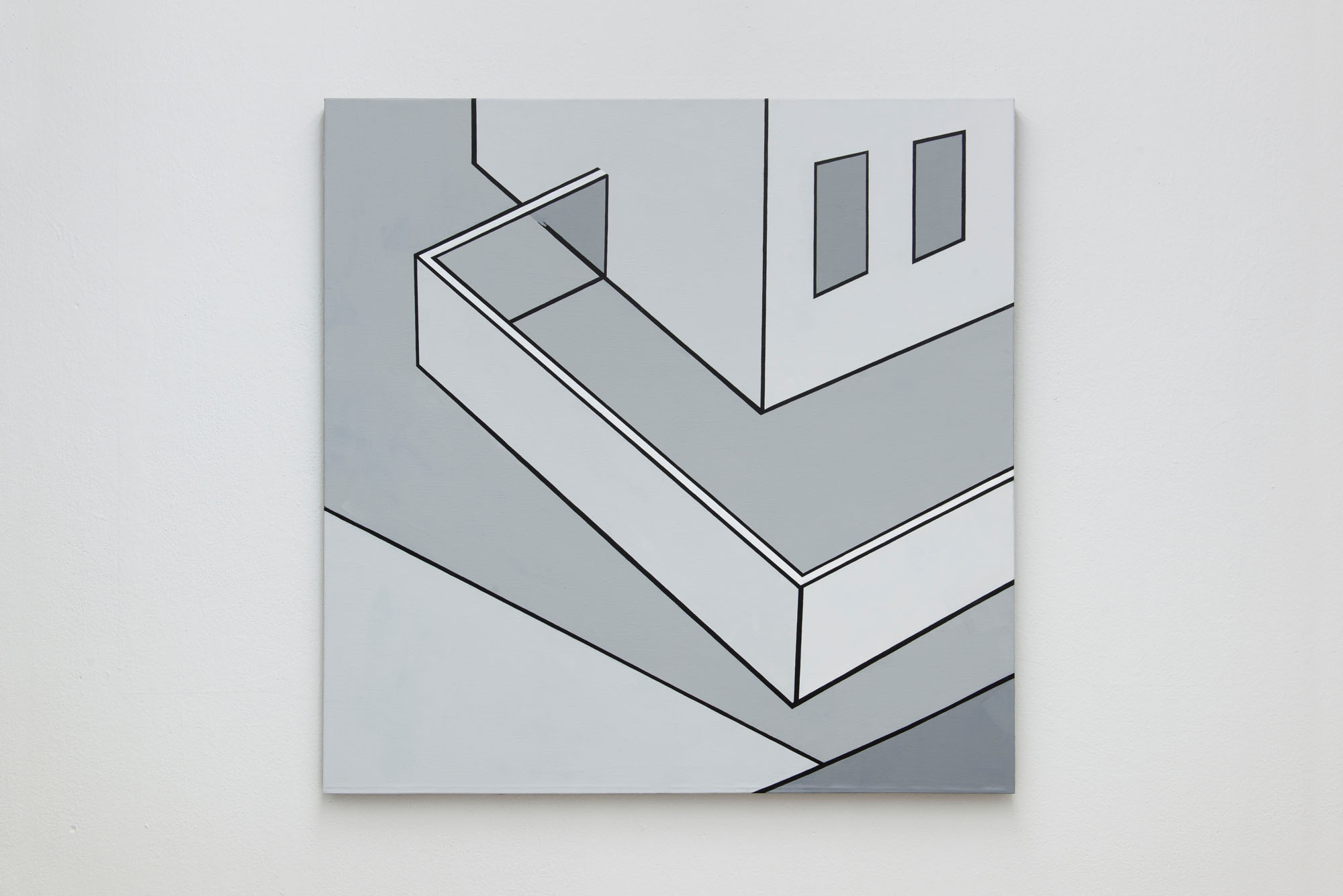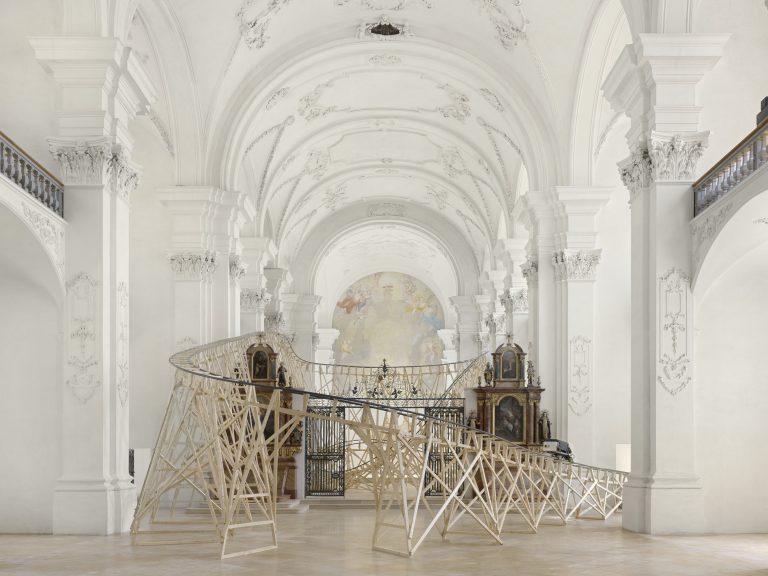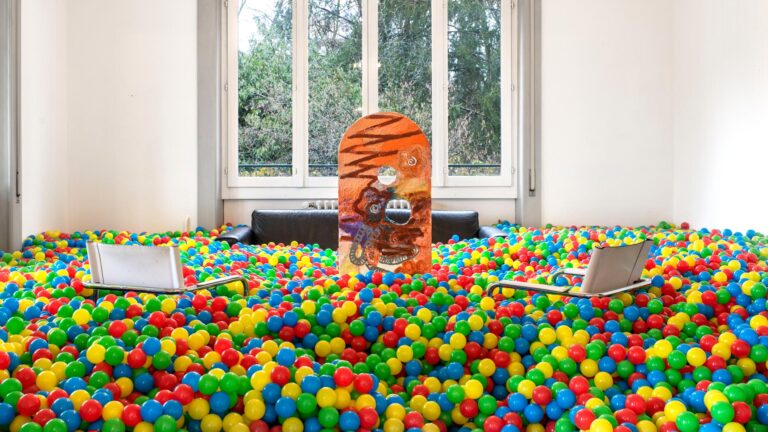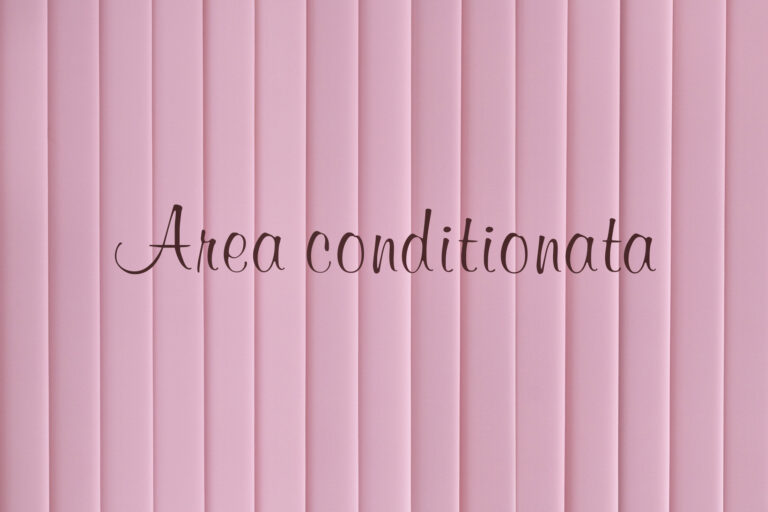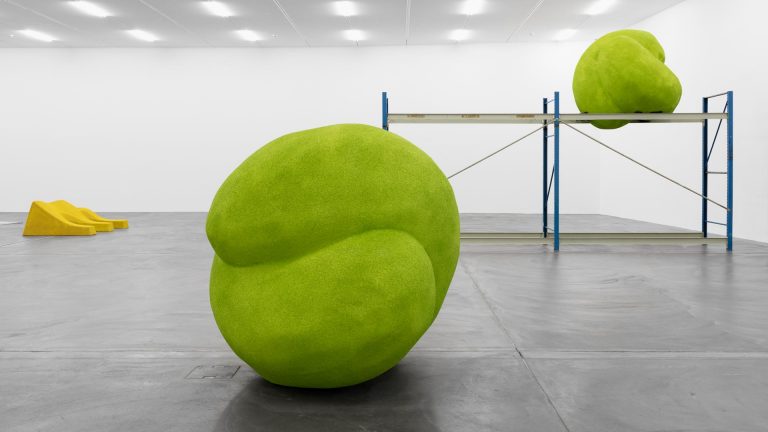Artist: Othmar Farré
Exhibition title: Given Circumstances
Venue: Milieu, Bern, Switzerland
Date: June 9 – July 20, 2019
Photography: all images copyright and courtesy of the artist and Milieu, Bern
Marlene Bürgi on Given Circumstances
Objective and impartial: According to French philosopher and phenomenologist Maurice Merleau-Ponty a virtual impossibility with regards to the human experience of the world. Perception, as Merleau-Ponty defines it, is always tied to a meaningful relation between the respective body and the world: “Looking for the world’s essence is not looking for what it is as an idea once it has been reduced to a theme of discourse; it is looking for what it is as a fact for us, before any thematization. […] We must not, therefore, wonder whether we really perceive a world, we must instead say: the world is what we perceive.”[1] Accordingly, the world is not a retrospective construct but rather an existing totality that shows itself to us. Othmar Farré approaches the world in a similar way. Unlike art historical traditions, the classical medium of painting does not serve him as a reflection of reality. Instead, the artist is interested in those things that already hold a painterly quality of their own. Farré’s work unveil seemingly insignificant yet specific, at times symbolically charged aspects that might be experienced as mundane and thus escape our attention.
Disenchanted and secular: The installation with six monochrome paintings and a line-up of conventional letterboxes shows how Farré removes everyday objects from their respective contexts. Old, weathered newspapers indicate something that is familiar, in this form of isolation, however, they refer to something absent or past. The selected sections of streets and buildings go back to an industrially produced children’s carpet. They seem similarly abandoned, even though the carpet’s colourful labyrinth of paths, bridges and various houses would usually invite to play. Despite the exact reproduction of the six different fragments, the artist’s hand remains discernible in different places, so that the grey surfaces and black contour lines reveal both their precision and their originality.
Planar and yet spatial: The reference to the real world remains visible, but the carpet sections seem to completely disregard the laws of perspective. The buildings that are indicated three-dimensionally face the flattened streets in plan view. Despite the overlap of visual dispositions, the staggering buildings and the street markings are clearly recognisable as such. This clash of two- and three-dimensionality literally visualises modern optical theory. The findings of the second half of the 19th century proved how the flat mosaic of the retinal image becomes spatial vision. To that effect, the brain completes the missing spatial data lacking in pure optical perception. But this ability must first be learned in childhood, as the German physiologist and physicist Hermann von Helmholtz describes: „The infant first begins to play with its hands. When a little older, a child seizes whatever is presented to it, turns it over and over again, looks at it, touches it, and puts it in its mouth […] By this means the child learns to recognize the different views which the same object can afford, in connection with the movements which he is constantly giving it.”[2]
The installation Given Circumstances provides an insight into the complex process of perception and points to its origins in children’s rooms. The multi-layered nature of the perspectives and one’s own location is negotiated not least through the isolated row of mailboxes as well. Spatiality, as in Merleau-Ponty’s sense, is neither unchangeable nor final, but dynamic and always bound to the body and its experiences. For we link what we know with what we see – because the world is exactly what we perceive according to the given circumstances.
Marlene Bürgi
[1] Maurice Merleau-Ponty, The Phenomenology of Perception, trans. by Colin Smith, London and New York: Routledge, 2002 [1945], pp. xvii-xviii.
[2] Hermann von Helmholtz, “On the Recent Progress of the Theory of Vision” [1867] in: Helmholtz on Perception: Its Physiology and Development, ed. Richard M. Warren and Roslyn P. Warren [New York: John Wiley and Sons, Inc., 1968], S. 127f; on the disclosure of visual structures based on the achievements of modern optical theory, in particular in relation to Robert Delaunay’s works, see Gordon Hughes, „Coming into Sight: Seeing Robert Delaunay’s Structure of Vision“, in: MIT Press Journal, No. 102, Fall 2002, S. 87ff.
Othmar Farré, Given Circumstances, 2019, exhibition view, Milieu, Bern
Othmar Farré, Given Circumstances, 2019, exhibition view, Milieu, Bern
Othmar Farré, Given Circumstances (Briefkasten), mailboxes, newspapers, advertising material, 165 x 140 x 35 cm, 2019
Othmar Farré, Given Circumstances, 2019, exhibition view, Milieu, Bern
Othmar Farré, Given Circumstances, 2019, exhibition view, Milieu, Bern
Othmar Farré, Given Circumstances (Landstrasse), acrylic on linen, 105 x 105 cm, 2019
Othmar Farré, Given Circumstances (Kundenparkplätze), acrylic on cotton, 90 x 90 cm, 2019
Othmar Farré, Given Circumstances (Leben und Arbeiten), acrylic on linen, 110 x 100 cm, 2019
Othmar Farré, Given Circumstances (Privatareal), acrylic on linen, 130 x 130 cm, 2019
Othmar Farré, Given Circumstances (Schaukel), acrylic on cotton, 100 x 100 cm, 2019
Othmar Farré, Given Circumstances (Rehabilitations- und Erholungszone), acrylic on linen, 110 x 100 cm, 2019
Othmar Farré, Given Circumstances, 2019, exhibition view, Milieu, Bern
Othmar Farré, Given Circumstances, 2019, exhibition view, Milieu, Bern
Othmar Farré, Given Circumstances (Briefkasten), Briefkasten, Zeitungen, Werbematerial, 165 x 140 x 35 cm, 2019
Othmar Farré, Given Circumstances, 2019, exhibition view, Milieu, Bern
Othmar Farré, Blue Perspectives (Michael. S, no. 2), acrylic on digital print on canvas, 70 x 90 cm, 2018
catering from the badworld by @DuttyBeanz










